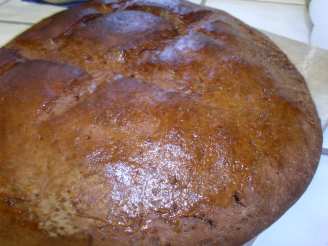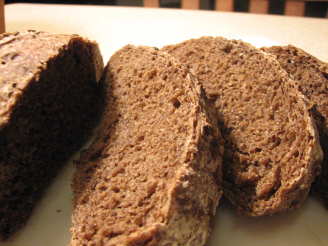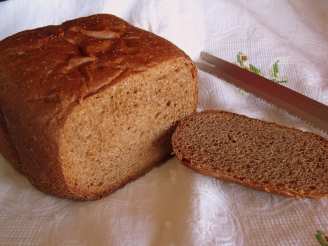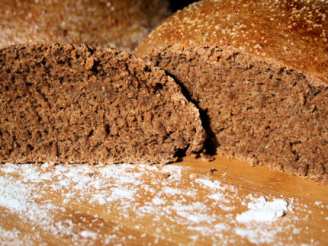Sourdough Pumpernickel Bread
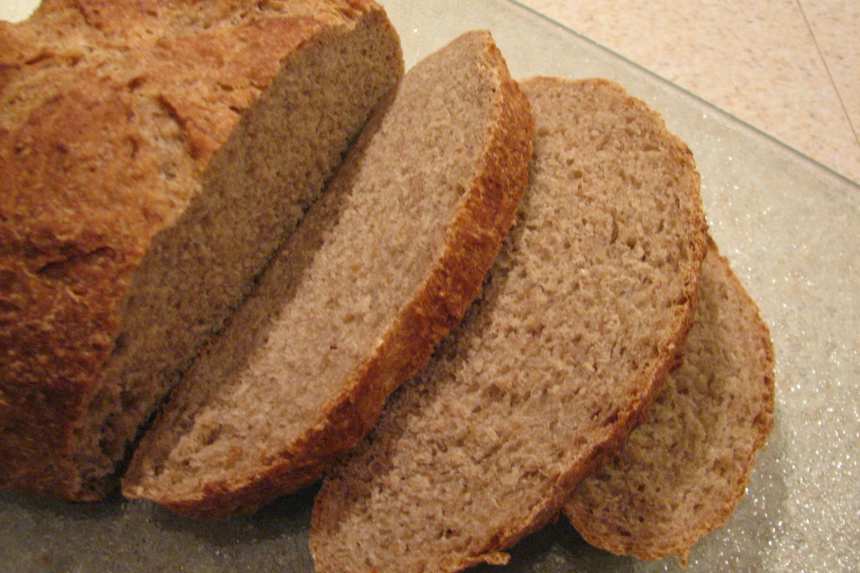
photo by Galley Wench

- Ready In:
- 48hrs 30mins
- Ingredients:
- 12
- Yields:
-
2 loaves
ingredients
-
Rye Starter
- 1 cup sourdough starter
- 1 cup coarse whole-rye flour
- 3⁄4 cup water, room temperature
-
Final Dough
- 2 cups unbleached bread flour
- 2 tablespoons brown sugar
- 1 tablespoon cocoa powder
- 1 1⁄2 teaspoons salt
- 1 1⁄4 teaspoons instant yeast
- 3⁄4 - 1 cup breadcrumbs, preferably from rye bread (dry or fresh)
- 2 tablespoons vegetable oil
- 1⁄4 cup water, room temperature
-
For Dusting
- semolina flour or coarse whole rye flour
directions
-
The day before making the bread:
- Mix proofed starter, rye flour, and water in a bowl.
- This will make a wet, pasty barm (starter).
- Cover the bowl with plastic wrap and ferment at room temperature for 4 to 5 hours or until the the sponge becomes bubbly and foamy.
- Immediately put it in the refrigerator overnight.
-
Bread baking day:
- Remove the rye barm (starter) from the refrigerator one hour prior to making the dough.
- After chill is off the barm, stir together the flour, sugar, cocoa, salt and yeast in large mixing bowl.
- Add the rye barm, bread crumbs and oil and mix on low speed with paddle attachment until the ingredients form a ball.
- Add additional water if the dough ball does not pick up all the flour, or more flour if the dough seems too wet.
- With dough hook attachment mix on loaw speed for 4 to 5 minutes.
- Add more flour as needed to make a smooth pliable dough ball. It should be tacky but not sticky.
- Note: Rye bread will become gummy if you mix too long, so try to make all adjustments early and minimize the mixing and kneading process.
- Transfer dough to lightly oiled bowl, rolling it around to coat it with oil.
- Cover bowl with plastic wrap and ferment at room temperature for 2 hours or until doubled in size.
- Sprinkle small amount of flour on the counter and carefully transfer the dough to the counter (try not to degas the dough).
- Divide the dough in 2 equal pieces and shape them into boules or rectangle for sandwich bread.
- Line baking sheet with parchment (or use proofing basket) and sprinkle with cornmeal, smolina flour or coarse whole-rye flour.
- If making sandwich bread, lightly oil 8 1/2 by 4 1/2 inch bread pan(s).
- Transfer the dough to the pans, mist the dough with spray oil and loosely cover with plastic wrap or a towel.
- Proof at room temperature for approximately 90 minutes, or until the dough crests 1 inch above the lip of the bread pan at the center, or rises to 1 1/2 times it original size.
-
For Freestanding Loaves:
- Preheat the oven to 450°F, placing a baking stone on the middle shelf and a broiler pan or cast-iron skillet on lower shelf (to provide steam).
- Score the loaves to allow for expansion.
- Transfer the dough to the baking stone.
- Pour 1 cup hot water into the steam pan and quickly close the door.
- After 30 seconds open the door and spray the oven walls with water.
- Repeat twice more at 30 second intervals.
- After the final spray, lower the oven temperature to 400°F and continue to bake for another 20-30 minutes. Checking the breads and rotating 180 degrees, if necessary, for even baking.
- When done, the bread should register 200°F in the center and sound hollow when thumped on the bottom.
-
For Loaf Pans:
- Place pans on baking sheet and place in the oven (middle rack).
- Bake for 20 minutes, then rotate the sheet pan 180 degrees for even baking.
- Continue baking another 20 to 30 minutes, or until loaves register 185-195°F in the center and sound hollow when thumped on the bottom.
- Remove finished loaves from the pan and cool on a rack for at least 1 hour before slicing.
Questions & Replies
Got a question?
Share it with the community!
Reviews
Have any thoughts about this recipe?
Share it with the community!
RECIPE SUBMITTED BY
Galley Wench
Oro Valley, Arizona
"Life is not a journey to the grave with the intention of arriving safely in a pretty and well preserved body, but rather to skid in broadside . . . Chardonnay in one hand . . .chocolate in the other; the body thoroughly used up, totally worn out and screaming "WOO-HOO, what a ride!!"

